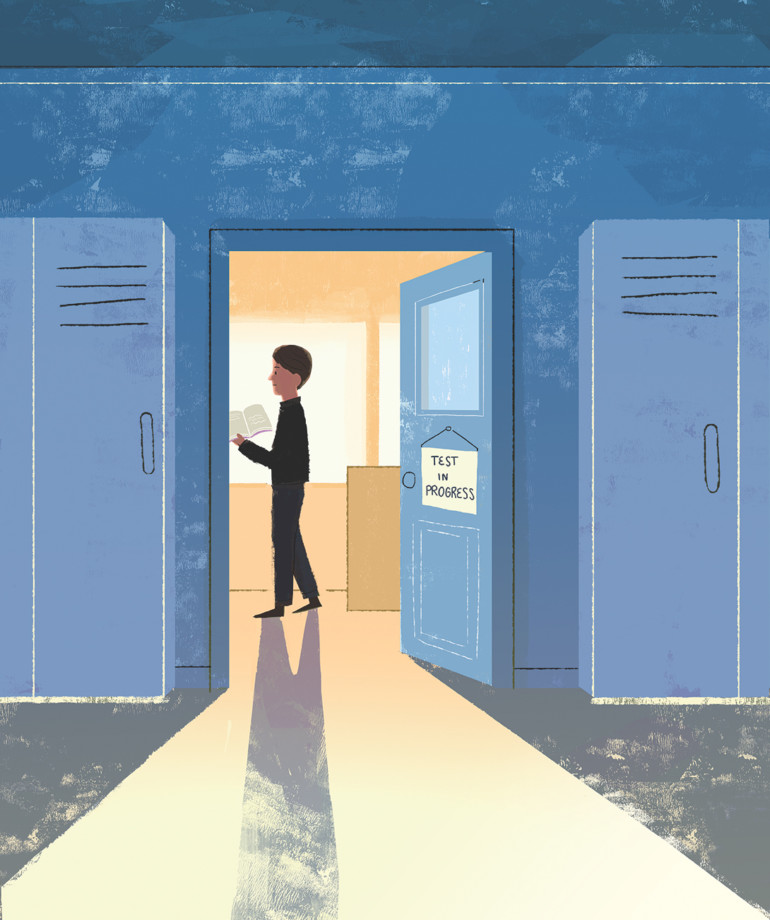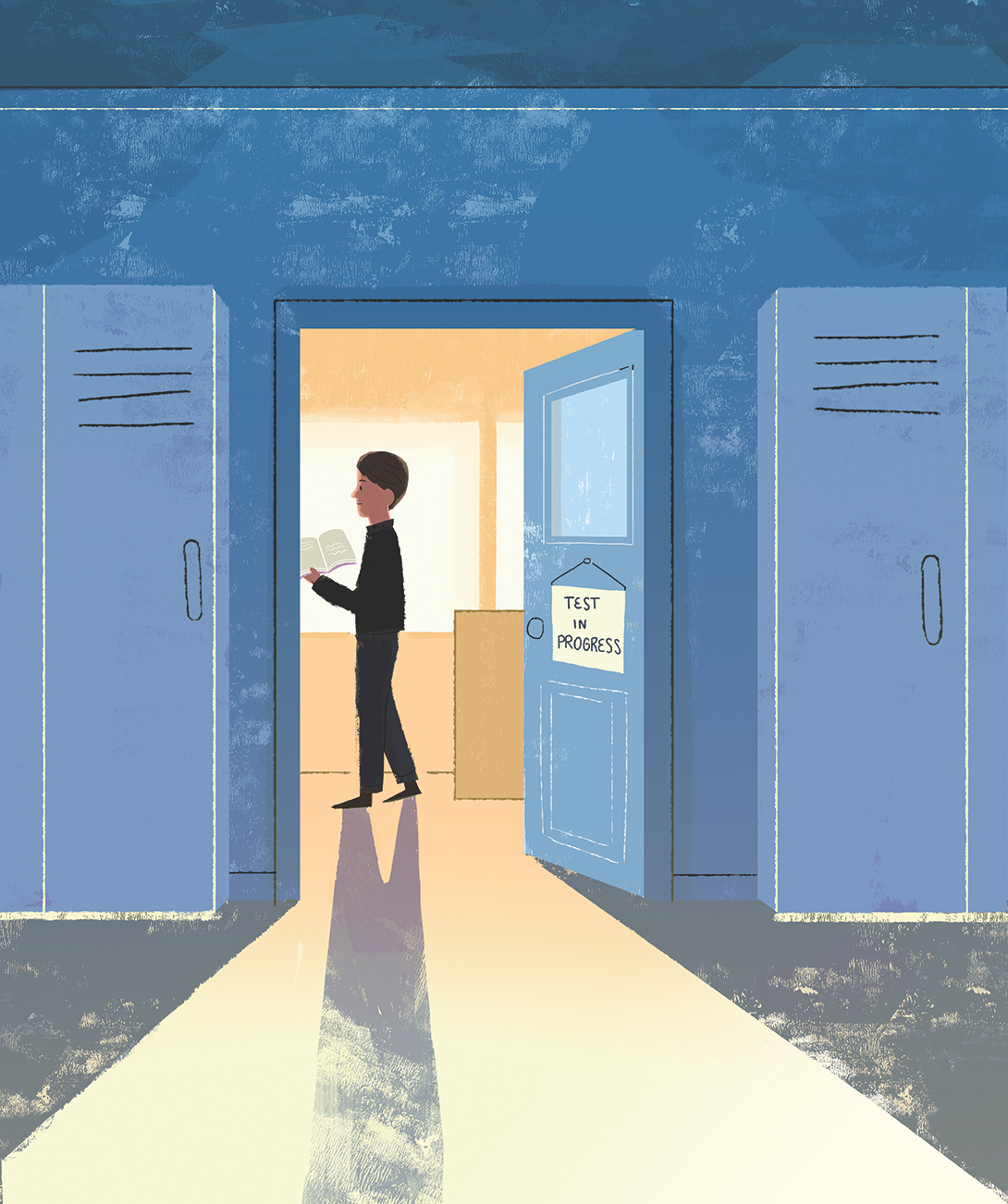I am a teacher. After my fifth or sixth year as a social studies instructor at Tamalpais High School I set out to write a book about education that more accurately reflected my experience than what I’d been seeing in movies, reading about and listening to on the radio.
Everywhere I turned I seemed to encounter either exposés of un-fireable rubber roomers huddling en masse in empty New York City administrative buildings or cinematic paeans to classroom heroes — Hilary Swank leading her Freedom Writers to the literary promised land. So I resolved to tell a truer, subtler, unvarnished story, something like the Kitchen Confidential of education. Classroom Confidential, perhaps.
My hope was to improve our education system by humanizing the teaching profession. If readers better understood what it was really like to teach, I figured, they’d be in a better position to influence policy, interact with their children’s educators and override the misleading stereotypes permeating our national discourse.
Marin boasts many top-notch schools that consistently score highly in state and national rankings. That status stems from several factors, including a supportive community, higher-than-average incomes, sound organizational systems and, of course, good teachers, not to mention a premium placed on learning for its own sake. What’s more, the value of Marin’s homes is directly linked to the performance of its schools. Homebuyers are drawn to the area in part because of elite public schools, which keeps housing prices high and, because of funding laws like Proposition 98, ensures those schools have much-needed financial backing from the state.
But the story I set out to tell in my book Teacherland (published in August) focused on the adults in the classroom, those with whom Marin’s sons and daughters spend the majority of their waking hours. And it began, in my mind at least, on the way to work as I found myself in constant “dialogue” with education-related programs on National Public Radio.
I came into teaching in the earlier years of President George W. Bush’s No Child Left Behind Act and the burgeoning accountability movement, was there as the Department of Education under President Barack Obama announced its Race to the Top grant program, and more recently watched as the Every Student Succeeds Act rolled back much of NCLB’s dictates. All the while my up-close classroom observations have been very different from the views I heard espoused from 30,000 feet above — the latter holding that the way to improve schooling was to tether teacher evaluations to high-stakes student tests. During this time, as I commuted in my Honda Civic back and forth across the bridge, it was not uncommon for me to talk out loud at the radio.
Arriving at school, I’d speak with colleagues in the parking lot, on breaks, at lunch and staff meetings, but these impromptu dialogues didn’t feel like enough. How would people outside the profession know what it was really like inside it? Why would people not believe the misinformation they were hearing?
As I wrote I began to see a link between education policies and how teachers were represented in popular culture. By painting a more human portrait of teachers, I was hoping to influence policy at both the local and national levels.
When you strip away all else, it is clear that three key challenges currently confront the teaching profession: competition, compensation, and understanding.
The first, competition, is perhaps the most controversial aspect and the easiest to misinterpret. Teaching is a wonderful career, but it can feel isolating spending one’s day removed from adults and adult interaction, surrounded only by adolescents — no matter how wonderful those young people may be. If teachers more consistently witnessed their colleagues in action, saw their skillful work and practice, they would surely improve their own, creating a rising tide of good instruction that lifts all boats. In other countries this is common practice; in Japan, for example, it’s called jugyō kenkyū, or lesson study. Teachers collectively plan a lesson, watch one teacher implement it, then as a group, debrief on what went well and what could be improved.
American teachers, however, spend more hours per day instructing in the classroom than do many of their counterparts elsewhere, so it’s difficult if not impossible to effectively institute “instructional rounds” or lesson study within a normal school day. Creating experimental schools would give researchers, policymakers, and educators a way to put lesson study into more consistent practice (which, by the way, was the idea prompting charter schools).
Competition also applies to teacher hiring. Raising entry barriers for the profession would mean changing everything from the tests for credentialing teachers to education department curricula to state licensing. In addition to creating a more able teaching corps, higher standards could raise respect for the job. Part of the reason medicine and law hold elevated positions in the occupational hierarchy of our society is that the MCAT, the “boards,” the LSAT and the bar exam are difficult examinations to pass.
Yet such tougher criteria seem unlikely in the face of widespread job vacancies that consistently remain unfilled. Ultimately, schools need teachers in the room.
One potential remedy for the labor shortage is to raise teacher salaries, which would also make education more attractive as a legitimate long-term career rather than a vocational steppingstone. We all want to pursue a higher calling, but we also need to eat.
Recently I overheard a local administrator say, “It’s hard to recruit teachers to come to Marin because it’s hard for teachers to live in Marin,” which aptly sums it up. Marin is in a unique position: schools do pay relatively well here, so our county has become a magnet for teachers across the state. But since not all California towns and municipalities are equally flush with funds, an across-the-board pay raise is about as likely as a radical schedule shift to accommodate lesson study.
But most of all, teaching has an image problem — the predicament of being misunderstood. Movies illustrate it perfectly. Here are just a few: Stand and Deliver (1988), Dead Poets Society (1989), Dangerous Minds (1995), Fast Times at Ridgemont High (1982), Ferris Bueller’s Day Off (1986), Dazed and Confused (1993), and more recently, The Great Debaters (2007), Fist Fight (2017), Coach Carter (2005), and Bad Teacher (2011). Teachers in these films are portrayed as either great or awful — inspiration or deadbeat, saint or slouch, hero or zero.
Marin County has more than 100 schools employing thousands of teachers. It’s safe to bet a preponderance of them fit neatly within none of those polarities, yet for some reason, our collective understanding hasn’t quite grasped that. Rather than typecasting teachers into either/or, we would all benefit from seeing them for who they are: human beings who educate the children of this county so it continues to be the inspirational, progressive, freethinking place we hold dear.
This premise is at the heart of my book, which began as a lonely debate with my car radio and yielded some ideas for solutions and positive change. I hope as parents and educators we’re able to look beyond movies and headlines and into the actual classrooms where Marin’s teachers are hard at work. With a few systemic shifts, some subtle and some large, our local schools can continue to improve, along with prospects for the well-being and future of our kids.
This article originally appeared in Marin Magazine’s print edition with the headline: “Teacherland”.



